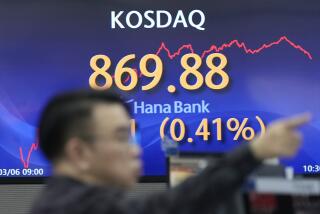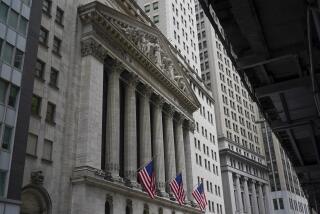The stock market is even worse than you think it is

The stock market is no longer not just not great — it’s downright awful. In fact, after Tuesday’s 550-point plunge in the Dow Jones Industrial Average, 2018’s market meltdown, at least in terms of valuations, now ranks among the worst of the last few decades.
The price-to-earnings multiple of the S&P 500 Index, based on the next 12 months of earnings, has fallen 17% in 2018. That’s the third-biggest drop in valuations since 1991, which is as far back as Bloomberg data goes on that metric. That’s only one percentage point better than the 18% slide in valuations in 2008, during the financial crisis. The worst valuation drop was in 2002, when corporate profits and the economy, but not yet the stock market, were rebounding from the dot-com bust.
The S&P 500 now trades at 15.4 times what those companies are expected to earn per share during the next four quarters, which includes the current one. That’s down from 18.7 at the start of the year. It is also the lowest point of Donald Trump’s presidency, down 8% from election day.
Stock prices are still up significantly since Trump was elected president, as is likely the balance of investors’ 401(k)s. But what investors are willing to pay for corporate earnings, i.e. the stock market’s valuation, is a better indicator of their feelings about the direction of the economy and their opinion about White House policies than where stocks are trading. Rarely have those feelings soured so quickly, most likely driven by a growing trade war, a likely-not-unrelated slowdown in global growth, and rising interest rates and inflation.
The good news is that drops in valuations tend not to last long, especially big ones like the one this year. In a report last week, UBS strategist Keith Parker pointed out that, on average, the market has returned 16% in the year after one in which P/E ratios have dropped significantly. In fact, going back to World War II, there have been only two years in which the market has dropped after a more than 1 percentage point drop in valuations the year before.
Parker predicts that the S&P 500 will rise to 3,200, or more than 20%, by the end of 2019. On top of the valuation drop, he points to a high consumer savings rate, a rebound in companies investing in the United States, and rising productivity as reasons the market will climb next year.
But there are also reasons to believe the traditional rebound won’t materialize this time. First of all, while down, the absolute level of stock market valuations is not that low. For instance, the P/E ratio dropped to 12.8 in late 2008 before the market rebounded the next year. The P/E ended at a lower point than it is now in six of the 10 years in which there were big valuation drops.
The bigger problem is that the elements that typically lead to higher stock market valuations are vanishing. A strong labor market and tariffs will probably drive up costs and reduce corporate profit margins. On top of that, interest rates are rising and growth is slowing. All of those typically lead to lower stock market valuations, not higher ones.
So, no, you’re not wrong that the market is looking shaky. The bad news is that it could still get worse.
Stephen Gandel writes a column for Bloomberg.






